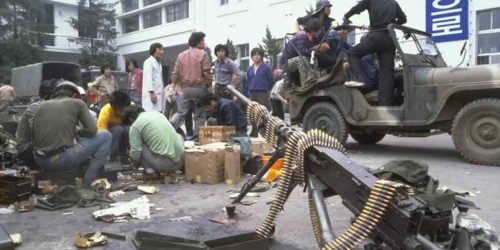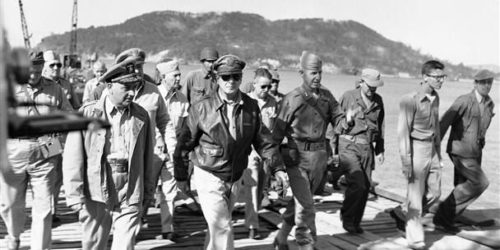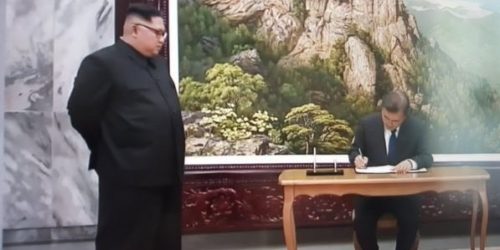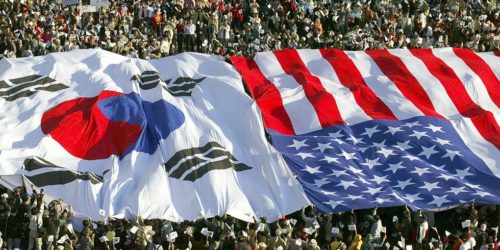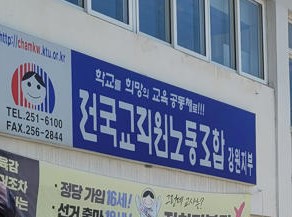Curious Circumstances: Moon Jae-in Met his Aunt in North Korea During the 2004 Family Reunion
Tara O, 2019-7-17
Key points:
- Moon took his family, including his son, who was not on the guest list, to North Korea to meet his Aunt in 2004.
- Moon’s family originally left North Korea in 1950, which should have placed his remaining family in North Korea in a low, disloyal, and untrustworthy Songbun class
- Despite this, Moon’s aunt was one of only 2 people out of 1000 North Koreans who were given the privilege of a reunion with their South Korean family when she was in her 50s. The rest were in their 60s and older.
- The lack of information on Moon’s son caused the North Korean guards to detain the entire contingent of visiting South Korean family members, but the issue was somehow swiftly resolved without incident
On July 11, 2004, Moon Jae-in met with his aunt Kang Byung-ok (강병옥), who lives in North Korea, during the 10th Inter-Korean Family Reunion held since 2000 at Mount Geumgang. Moon was the Senior Secretary for Nongovernmental Organizations at Rho Moo-hyun’s Blue House at that time. He went to North Korea with his wife Kim Jung-suk (김정숙), his son Moon Joon-yong (문준용), his mother Kang Han-ok (강한옥) and his older sister to meet with his mother’s younger sister Kang Byung-ok. There were additional people in his party.
At that time, his mother’s age was 77 and his aunt’s age was 55. Moon’s birthday is shown as January 24, 1953, so Kang Byung-ok, only about 4 years older than Moon, is closer to his age than Moon’s mother, who is 22 years older. Moon was 51 at that time, but his age was listed as 74 on North Korea’s “Confirmation Roster about whether one is alive or not (생사 확인 회보서).” Because Moon took his son Moon Joon-yong, and North Korea did not have a record of Moon Joon-yong on the Confirmation Roster, North Korea detained the entire contingent of South Korean visitors on their return to South Korea on July 13, 2004, but released them after 40 minutes.
Tens of thousands of people in South Korea apply, hoping to be chosen to be included in the family reunion delegation to meet their family members in North Korea, and priority is given to older people to give them a chance to see their family before they pass away. This may have explained why Moon’s age was listed as 74 (when he was not), but in the process, people much older than him missed the opportunity to meet with their family members.
Here’s a video of Moon Jae-in meeting his aunt at the Family Reunion at Mount Geumgang, North Korea, in 2004. https://youtu.be/_nVm39Slyn8
On the North Korean side, of the 200 people who showed up for the reunions, all were 69 years or older, except for Moon’s aunt, who was the only one in her 50s. There was 1 person in her 50s (Moon’s aunt), 9 in their 60s, 186 in their 70s, and 4 in their 80s. North Korea allowed 1,000 family members to meet with their South Korean families during the 10 family reunions since 2000. Out of 1,000, only two North Koreans were in their 50s, one of whom was Moon Jae-in’s aunt. This special treatment on the North Korean side should probably raise questions.
Moon’s parents were known to have left North Korea during the Hungnam Evacuation operation of the Korean War in December 1950, and Moon Jae-in was not born until 1953. Thus he has never seen his aunt before, yet she specified that she wanted to meet Moon Jae-in by asking for a “confirmation on whether he is alive or not,” listing him as her nephew and putting his age as 74. How could Kang Byung-ok have even known about Moon Jae-in, when he was born years after her older sister (Moon’s mother) left North Korea? How could she believe Moon Jae-in, her nephew, was 19 years older than her (Moon was 51 at the time, not 74)?
Another curious aspect is that having a family member leave North Korea places one in a low Songbun class.(1) Songbun is the North Korean regime-sponsored discrimination system. It determines what privileges, opportunities, or punishments a person and their family will be exposed to. Kang Byung-ok should fit the definition for someone assigned to a poor Songbun, which means her loyalty the Kim regime should have been questioned. This definition should also fit the others from North Korea who were at the Family Reunion. However, she was the only one who was very young compared to 998 other North Koreans who were selected. It is possible that North Korea is using Kang Byung-ok or the rest of the family members in North Korea(2) as leverage to incentivize or compel Moon Jae-in to support North Korea in exchange for favors to his low Songbun class family in North Korea. With Moon Jae-in now as the president of South Korea, this issue is even more serious. There are other potential possibilities, but will not be addressed here.
Another puzzling part was that North Korea did not have Moon Jae-in’s son’s information, yet Moon still took his son to North Korea, apparently without fear that his son might be detained for not being on the roster. Additionally, it took only 40 minutes for the detained visiting delegation (due to missing paperwork on Moon Jae-in’s son) to be released without incident, which is surprising and very quick for any bureaucracy.
The preferential treatment Moon Jae-in received from South Korea while at the Blue House is problematic, especially since Moon’s mantra is “equality” and “fairness,” and raises the question of the abuse of authority. What is more concerning, however, is the fact that Moon has a close family member in North Korea and the North Korean authorities are not only well aware of the relationship, but have demonstrated preferential treatment. Given what appears to be close familial ties with North Korea, and the unusual special treatment shown by North Korea, perhaps this warrants a closer scrutiny. Is Moon Jae-in’s North Korean family a security liability to the Republic of Korea?
Footnotes (other than hyperlinked referenced):
- (1) Robert Collins, Marked For Life: Songbun, North Korea’s Social Classification System, the Committee for Human Rights in North Korea, Washington, DC, 2012, 3 and 10.
- (2) Moon Jae-in, 운명 (Destiny), Seoul: Gagyo Choolpan, 2011, 106. In Moon Jae-in’s biography Destiny (운명), he talks about his extended family being so large that there was a “Moon clan village” near Hungnam, North Korea.
